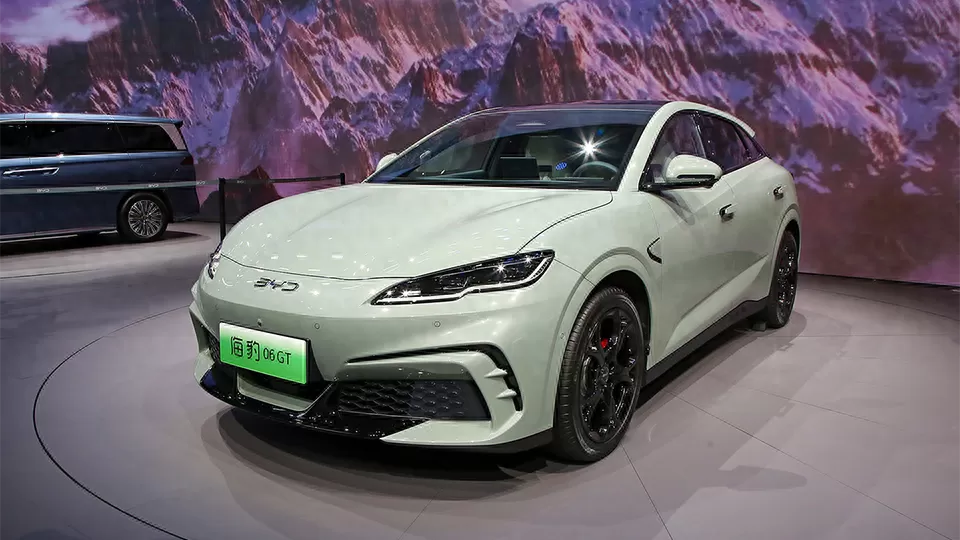Last month, the Xiaomi SU7 made headlines with its first track crash, and now its repair costs are trending again.
Everyone thought that fixing the Xiaomi SU7. with all its airbags deployed and significant damage to the front end, would be expensive. Some even advised the owner to scrap the car.
Surprisingly, repairing the car only cost 53.000 yuan, and the advanced-looking matrix LED headlight assembly of the Xiaomi SU7 cost less than 6.000 yuan. This is much cheaper than the headlights of other brands' cars, which can cost hundreds of thousands.

Netizens jokingly said that Xiaomi is really competitive, making it hard for other car brands that rely on after-sales service to survive.
So, it's no wonder that the Xiaomi SU7 sells well. It is a conscientious product among the new car-making forces. Similarly, in the traditional luxury brand camp, the Volvo S60 also stands out in this way.
Currently, the bare car price of the Volvo S60 is around 200.000 yuan, and it doesn't require a purchase tax. They also offer a first-year insurance fund, and existing customers get extra free maintenance. Importantly, compared to other luxury brands in the same class, the Volvo S60's repair cost ratio is very low, around 500 yuan, making the cost of future repairs and maintenance very low.
Digging deeper, we can find a commonality between the Xiaomi SU7 and the Volvo S60: both cars focus on handling and are a lot of fun to drive. Recently, a media outlet held a track experience event, showcasing the Volvo S60's performance advantages.
No one would argue against the fun of driving the Xiaomi SU7. With multiple press conferences by Xiaomi's Lei Jun and various road and track tests by influencers, everyone should have a basic understanding of the SU7's acceleration performance and chassis tuning. However, many people don't know that the low-key Volvo S60 is also a driver's car, offering extreme and pure driving pleasure. It is currently the sporty model in Volvo's lineup.
Although I'm not a data enthusiast, let's briefly discuss the Volvo S60's specs because its power figures are indeed impressive in the fuel car domain.
The latest Volvo S60 comes in three powertrains: B4. B5. and T8 plug-in hybrid. The B4 model has 197 horsepower and 300 Nm peak torque, with a 0-100 km/h time of 7.9 seconds. The B5 model offers 250 horsepower and 350 Nm peak torque, with a 0-100 km/h time of 6.9 seconds. The T8 plug-in hybrid model boasts 456 horsepower and 709 Nm peak torque, with a 0-100 km/h time of 4.7 seconds. Owners report that even in battery-depleted state, the Volvo S60 T8 remains very powerful.
Compared to other luxury sedans, the Volvo S60 has another advantage: its standard wheelbase design. This wheelbase, paired with the widest track in its class, allows the S60 to have a more stable center of gravity, reducing weight transfer during high-speed cornering and providing excellent anti-roll performance.
Some might ask, if the standard wheelbase is so advantageous, why do other brands extend the wheelbase? The answer is simple: other luxury cars in the same class have longitudinal rear-wheel-drive platforms, which take up more space in the engine bay, forcing them to extend the wheelbase to ensure passenger space. The Volvo S60. being a transverse platform model, has a more compact powertrain, which gives it the confidence to stick with a standard wheelbase.
Of course, rear-wheel-drive cars have their advantages, like better front-rear weight distribution and more precise steering, but these are physical traits inherent to rear-wheel-drive cars that can also be achieved through design in front-wheel-drive cars. Thanks to the efforts of Volvo's engineering team, the S60's front-rear weight distribution is nearly 50:50. Additionally, with a lightweight front double wishbone and rear integral multi-link suspension, the S60 offers clear road feedback and precise directionality, making full use of its short wheelbase and high horsepower advantages.
Good products share common traits, and the Volvo S60 and Xiaomi SU7 are examples of this. Both are 200.000 yuan-level sedans that offer extreme driving fun and comfortable rides while keeping repair and maintenance costs low. If you have a budget of around 200.000 yuan for a car, both of these vehicles are worth experiencing!






